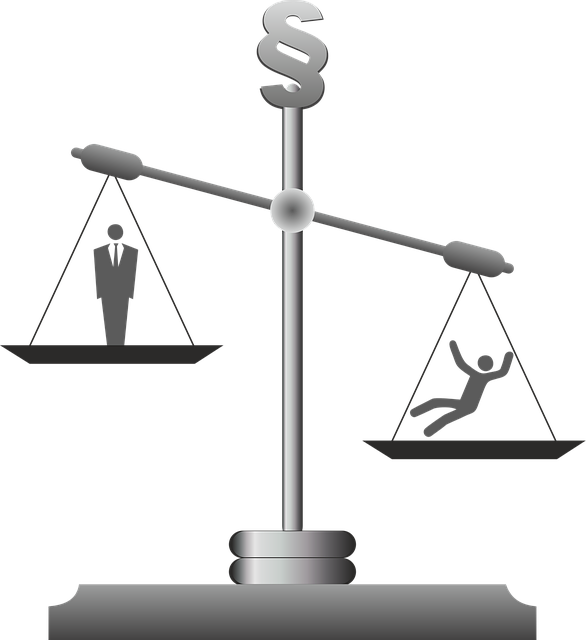Whistleblower Protection Laws (WPL) are vital for filing defamation lawsuits, shielding individuals from legal risks while pursuing justice against malicious practices. To succeed, prove false statements, their communication, and resulting harm to reputation. Navigating complex legal procedures requires understanding jurisdiction-specific laws and an expert attorney in WPL. Documenting false statements with intent or reckless disregard is key. Specialized legal experts gather evidence for compelling cases meeting defamation standards, ensuring rights protection and wrongdoings exposed through trials. Learn how to effectively file a defamation lawsuit using these strategies.
“Whistleblower protection lawsuits are crucial tools for individuals who expose illegal or unethical activities within organizations. This article guides you through the intricacies of navigating these legal battles. We’ll explore essential aspects, including understanding whistleblower protection laws, recognizing the elements of a strong defamation suit, and mastering legal procedures to file effectively. Additionally, we provide strategies to overcome common challenges, ensuring you’re equipped with the knowledge needed to pursue justice. Learn how to file a defamation lawsuit with confidence using these actionable insights.”
- Understanding Whistleblower Protection Laws
- Elements of a Successful Defamation Suit
- Navigating Legal Procedures and Filing Requirements
- Strategies to Overcome Common Challenges in Whistleblower Cases
Understanding Whistleblower Protection Laws

Whistleblower Protection Laws (WPL) are designed to safeguard individuals who expose illegal or unethical activities within their organizations. These laws vary by jurisdiction, but they generally provide immunity from retaliation for employees who report fraudulent or harmful acts. Understanding WPL is crucial when considering how to file a defamation lawsuit, as it can protect whistleblowers from potential legal repercussions while pursuing justice.
In high-stakes cases involving white collar and economic crimes, navigating WPL is complex. Whistleblowers must act promptly and ensure their disclosures are made in accordance with the law to avoid indictment. By familiarizing themselves with these protections, individuals can take the necessary steps to safeguard their rights while seeking to expose and prevent malicious practices.
Elements of a Successful Defamation Suit

A successful defamation lawsuit requires a clear understanding of key elements that constitute this legal claim. First and foremost, to file a defamation lawsuit, one must prove that false statements were made about them, causing harm to their reputation. This typically involves demonstrating several crucial factors. The plaintiff needs to show that the information was false, that it was communicated to others, and that it resulted in damage to their professional or personal standing. It’s essential to provide evidence of these elements to achieve a complete dismissal of all charges.
In terms of strategy, crafting a compelling narrative is vital. This means presenting the facts in a structured manner, highlighting how the false statements were made and who was involved. For corporate and individual clients alike, achieving extraordinary results often hinges on this effective storytelling. By carefully outlining the damage caused by the defamatory remarks, plaintiffs can build a strong case that fosters sympathy from the courts and juries.
Navigating Legal Procedures and Filing Requirements

Navigating Legal Procedures and Filing Requirements can be a complex task, especially for those considering how to file a defamation lawsuit. The first step involves understanding the applicable laws in your jurisdiction. Defamation lawsuits often require a thorough review of public records and legal precedents to determine the strongest course of action. Engaging an experienced attorney who specializes in whistleblower protection is crucial; they can guide you through the intricacies of the process.
The filing requirements vary depending on the nature of the case and the venue. For instance, when filing against a corporation, it’s essential to serve legal documents to the appropriate corporate officer or registered agent. This process demands precision and adherence to strict deadlines. The successful pursuit of such cases often hinges on an unprecedented track record of the attorney representing corporate and individual clients, ensuring their rights are protected effectively.
Strategies to Overcome Common Challenges in Whistleblower Cases

Navigating whistleblower protection lawsuits involves overcoming unique challenges that can be complex and intimidating. One common hurdle is distinguishing between protected disclosures and potential defamation. To file a successful defamation lawsuit, how to file a defamation lawsuit becomes crucial. It requires meticulous documentation of false statements made with malicious intent or reckless disregard for the truth.
Strategizing around these challenges involves gathering robust evidence, including communications, records, and expert testimony. Legal experts specializing in white-collar and economic crimes can be invaluable in navigating these complexities. By presenting a compelling case that meets the legal standards for defamation, whistleblowers can achieve extraordinary results, ensuring their rights are protected and wrongdoings are brought to light through jury trials.
Whistleblower protection lawsuits are a critical mechanism for holding organizations accountable and ensuring transparency. By understanding the intricacies of whistleblower protection laws, recognizing the elements of a successful defamation suit, and navigating the legal procedures involved, individuals can effectively protect their rights. With the right strategies in place, whistleblowers can overcome common challenges and play a pivotal role in promoting ethical conduct and preventing corporate wrongdoings, ultimately fostering a more accountable and transparent society. Knowing how to file a defamation lawsuit is a key step in this process.






